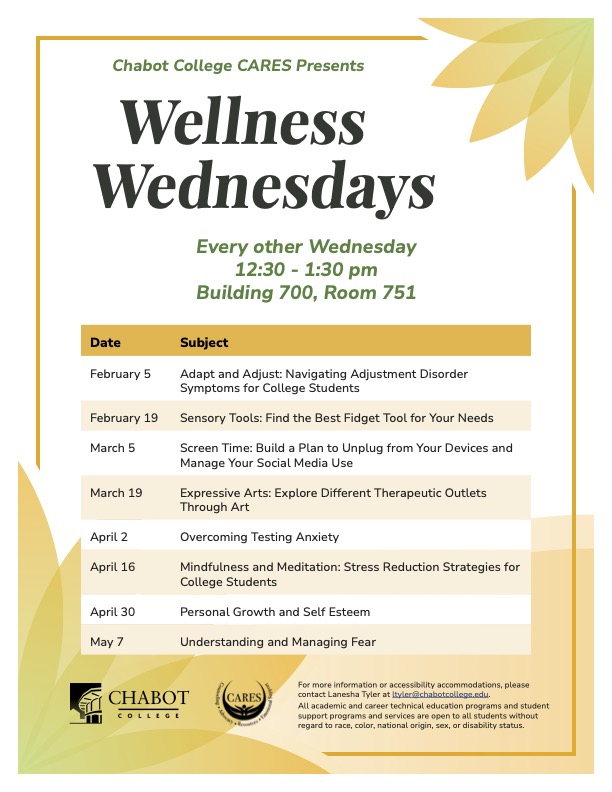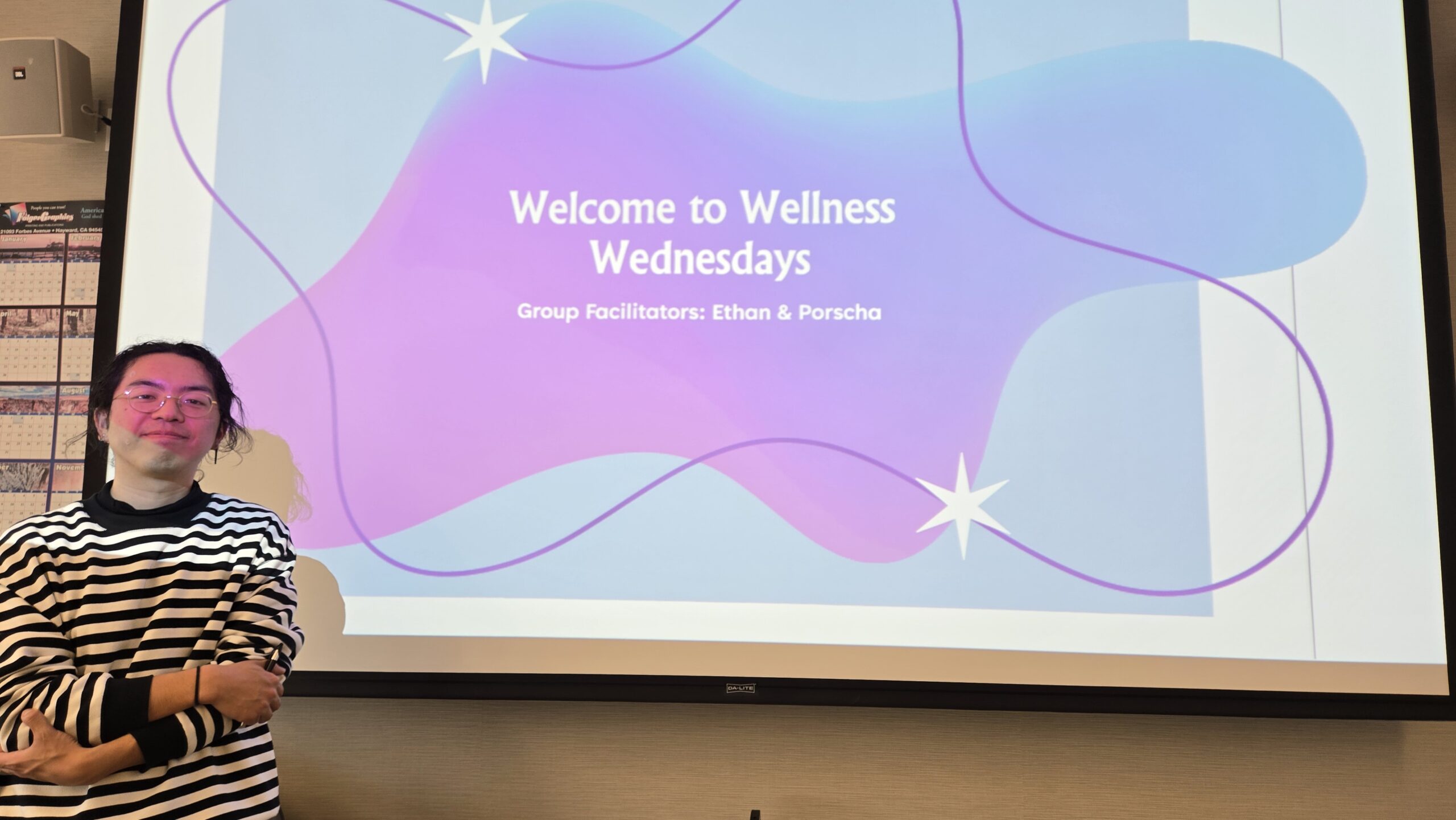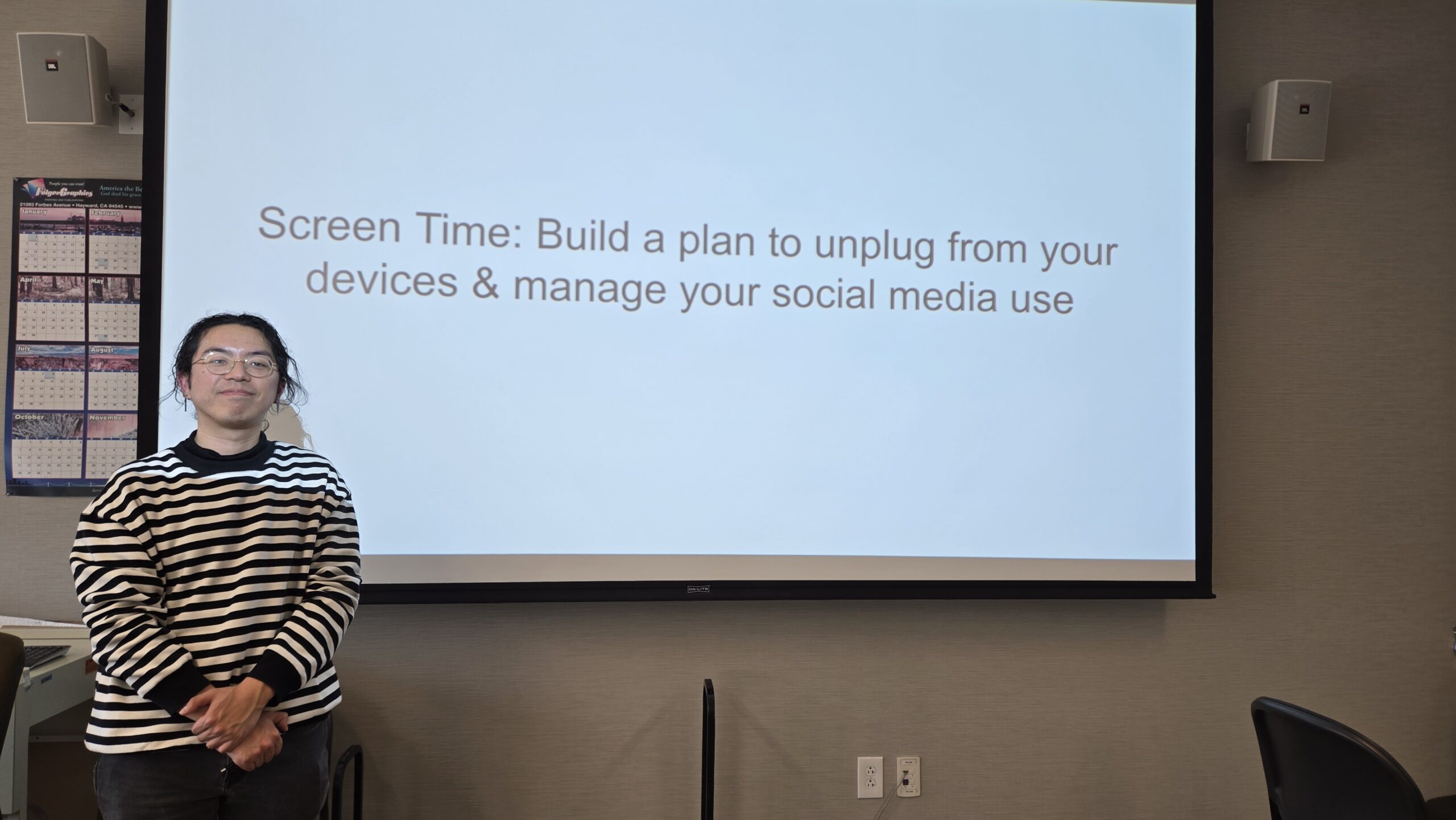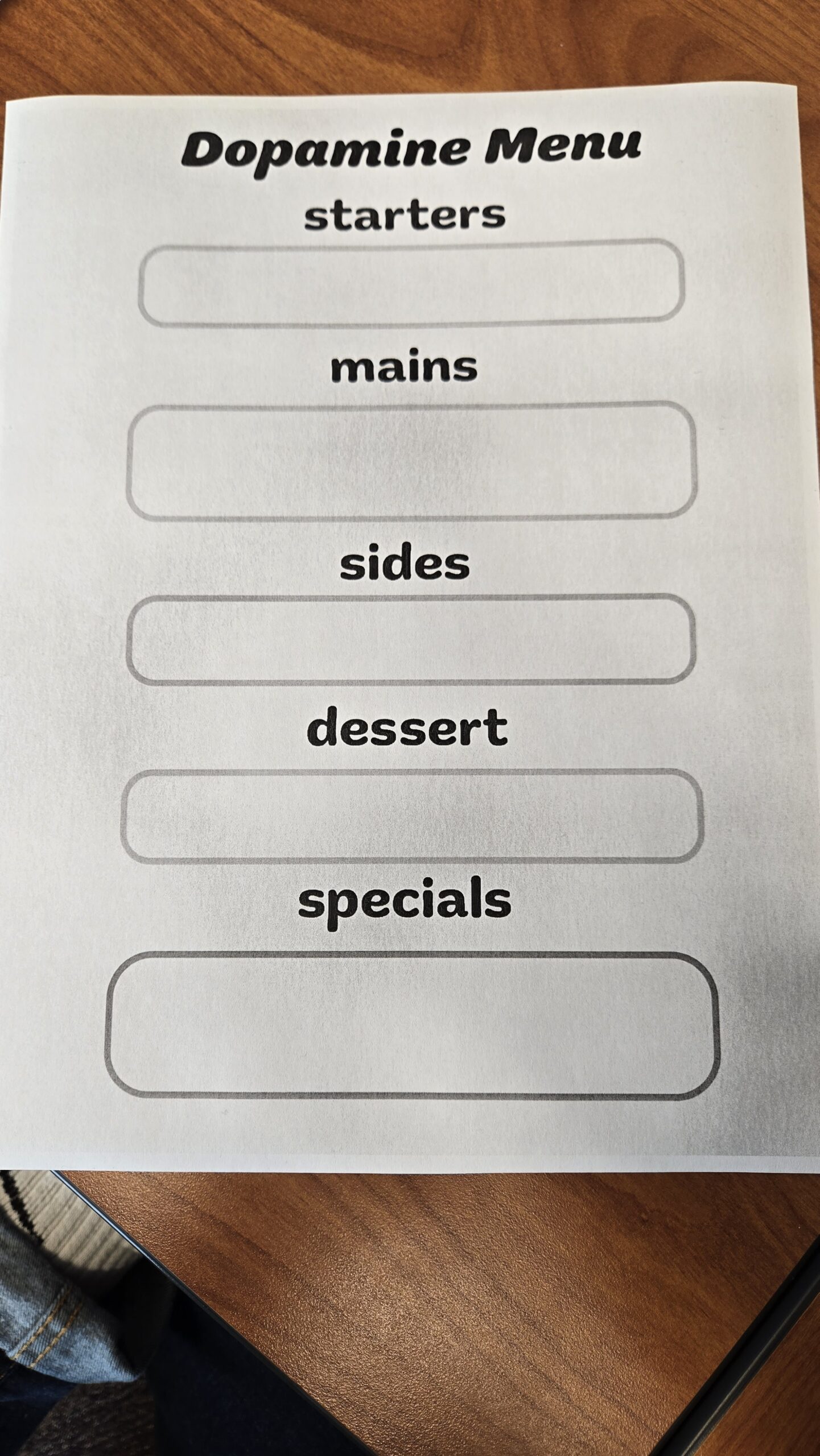U.S. citizens of all ages spend an average of over seven hours per day looking at internet connected screens and devices, as widely reported in 2023. Between television, computers, smartphones, and tablets, American adults aged 18 or older spend an average of eight and a half hours per day looking at some type of screen. That’s equivalent to more than two and a half continuous days per week.
Excessive screen time has been linked by medical research to increased anxiety, insomnia, and feelings of loneliness. This is in addition to physical side effects like neck pain, strained eyesight, and lethargy.
If these facts and figures remind you of your own experience with screens – especially your phone – then you may be considering reducing your own screen viewing habits. But, you also know that reducing screen time is a task that’s easier said than done.
Ethan Tonomura, an intern with the Counseling Advocacy Resources Emotional Support (CARES) program here at Chabot, says that struggling to reduce screen time is an exceedingly common issue among college students. “Very few people would disagree that being online too much is a problem,” he says. “A common theme is, you know, the doom scrolling before bed. You get all that blue light and then your sleep tanks, and you’re like ‘wow that sucked’.”
Ethan and the CARES team have been hosting a series of workshops on campus collectively titled “Wellness Wednesdays.” The team is devoted to giving students information on how they can improve their mental health and wellness. Each workshop focuses on a new area of mental health. The workshop on March 5 was all about how to reduce screen time.
One strategy that Ethan recommends is using productivity apps to put limits on your most problematic sources. “Many smartphones will have some type of tool that can limit your scrolling time. You eat up your two hours on a certain app and it will automatically block it for a bit.”
Another strategy is to find replacement behaviors. If using screens has become habitual, it can be helpful to have non-screen stimuli on hand. Something like a book, a puzzle, or even a journal are all helpful tools to have nearby when you feel the urge to reach for your phone.
One of the more interesting exercises that Ethan demonstrated at the screen time workshop was the Dopamine Menu. “The basic idea of the dopamine menu is that a common reason why we scroll is because it does give us a hit of dopamine,“ Ethan explains. “It’s a tool where you’re feeling a little down, a little stressed and you want a pick me up, and instead of reaching for your phone, you can reach toward the menu.”
The dopamine menu is broken into four categories: starters, mains, sides, and desserts. “The starters are something small and quick you can do in ten minutes or under,“ says Ethan. Deep breathing, a short walk, or stretches are good examples of starters.
Mains are activities that take a bit longer and act as full replacement behaviors for screen time. That could be an hour at the gym, 30 minutes reading a book, or a 20 minute yoga session. These all fall under the mains category on the menu.
Sides are activities that are done concurrently with other activities. “These are more like a sauce for your main activities.” Listening to an audio book or podcast while doing school work counts as a side. Walking on a treadmill while you read can be as well. If it adds to your dopamine menu without increasing your screen time, then you can consider it a side.
Last but not least, we have desserts. This is where you get to indulge in screen time within moderation. Given that we live in an increasingly digital age, it is impossible to cut it out of your life completely. The dessert section of the Dopamine Menu exists for this reason. It allows you to reward yourself with a healthy amount of screen time after periods of productivity.
Although these suggestions seem like a lot of adjustment all at once, Ethan reminds students that it is usually better to start with small, incremental changes that build up over time. “It is arguably more important to build small healthy habits first and then increase those,” he says. “Going super hard at the beginning is lto burnout. Maybe your screen time doesn’t drastically transform but it’s a little less and you go to bed early one day out of the week, then that’s a victory.”
Hopefully these screen time reduction tips can help you spend less time looking at your phone and other devices. If you want more tips on how to maintain your mental health and overall wellness, consider attending the Wellness Wednesday events held on campus every other Wednesday through the end of April. Alternatively, you can visit the CARES office in the 700 building to get more tips, resources, and support dedicated to improving the mental health and wellness of Chabot students. More information about CARES and Wellness Wednesdays can be found at https://www.chabotcollege.edu/student-services/mental-health/.







